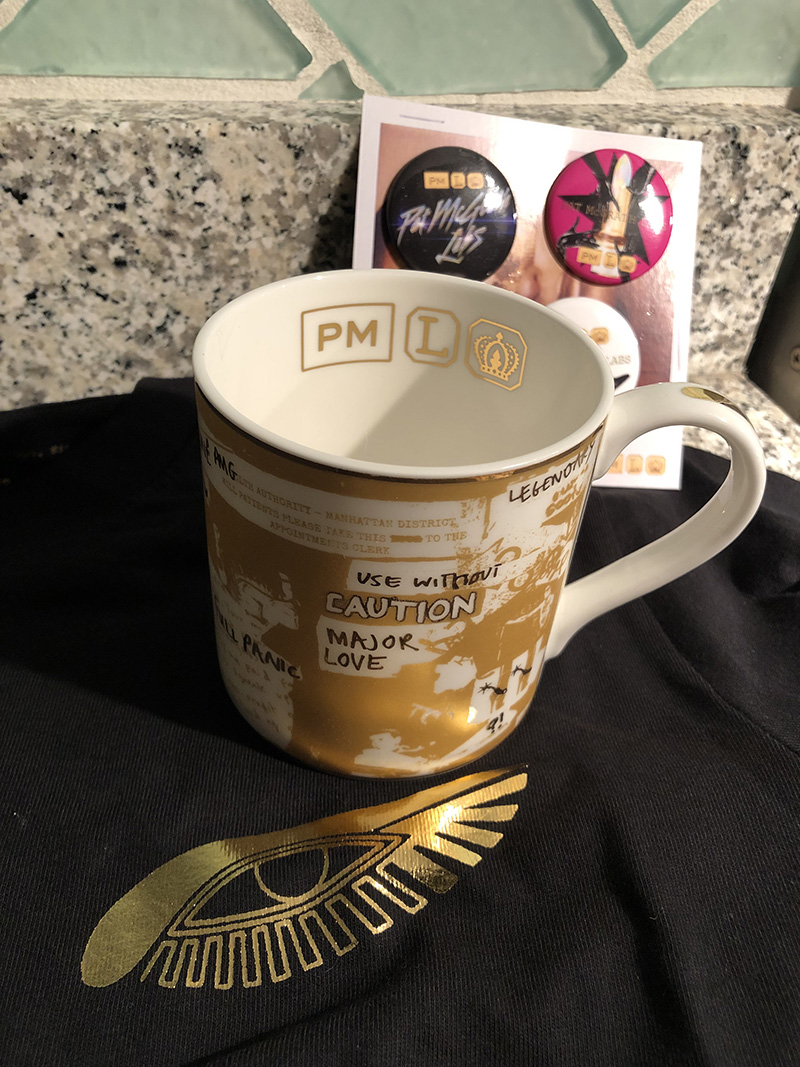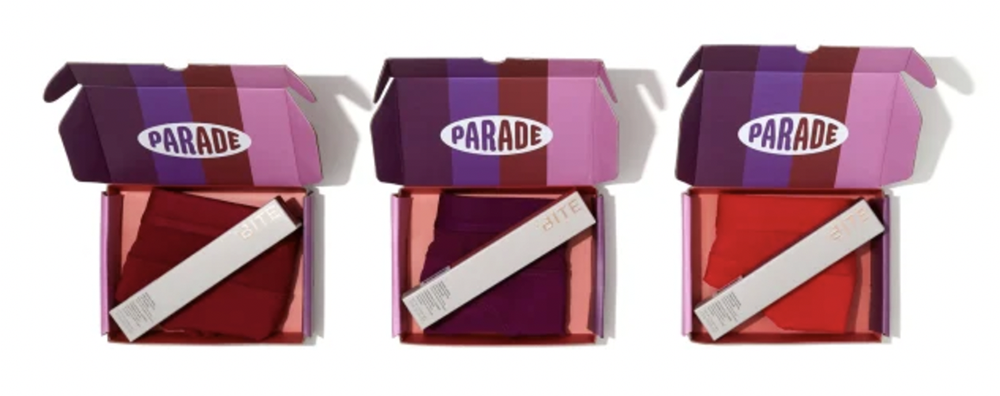Curator's note: For several years now I've been wanting to discuss the trend of non-makeup merch being sold by beauty brands but was having a difficult time getting around to it. Fortunately, another wonderful MM volunteer and aspiring beauty editor, Hannah, kindly stepped up to write the article. I am so very grateful to have this contribution to the Museum!
The Rise of Non-Makeup Merchandise in the Beauty Industry
By Hannah T.
For as long as we’ve been dressing our faces in creams and colors, makeup brands have been able to dominate the lifestyle "industry" from a sort of bubble. Cosmetic products and collections have amassed success in sales and popularity while staying within the realm of beauty. These products have stood boldly on their own, independent of other lifestyle influences such as fashion, travel, or fitness. Even collaborations have only been extended to influencers who are part of the makeup niche, or other beauty brands. This is a big bubble, mind you. According to Forbes, the beauty industry is a $532 billion business, which will reach or exceed $800 billion by 2025. The makeup industry could have stayed in this beauty bubble and continued to command the lifestyle craze from afar. So, what changed?
Brands with a wide array of followings and aesthetics began offering their own non-beauty merchandise and collaborating with non-makeup brands to include items outside of the makeup bubble in their new launches. What used to be a "freebie" or gift-with-purchase is now an entirely separate product, intended as part of the brand or marketed and sold as a partnership between two separate industries. Whether small or large, indie or mainstream, makeup companies are now selling fashion and accessories like sweatshirts, pins and mugs.* “It’s no longer enough just to sell a product. We crave the full experience. It’s become commonplace for fashion brands to expand into cosmetics (along with housewares and even food). But it wasn’t common to see the reverse, [until now],” writes Heather Chichowski at The Fashion Spot.
Other companies collaborate with non-makeup brands for limited-edition collections such as footwear and home decor. With these marketing and collaboration techniques, anything is possible. Two of your favorite worlds come together to create a product out of your wildest dreams, and you just have to have it. Or you’re a rabid fan of the brand and feel a pressing need to show your devotion via bags and keychains in addition to wearing the makeup. Remember, this is no longer a freebie – this is a big-ticket product with double the value behind it, and it deserves to be sold separately from the makeup items the brand has to offer.
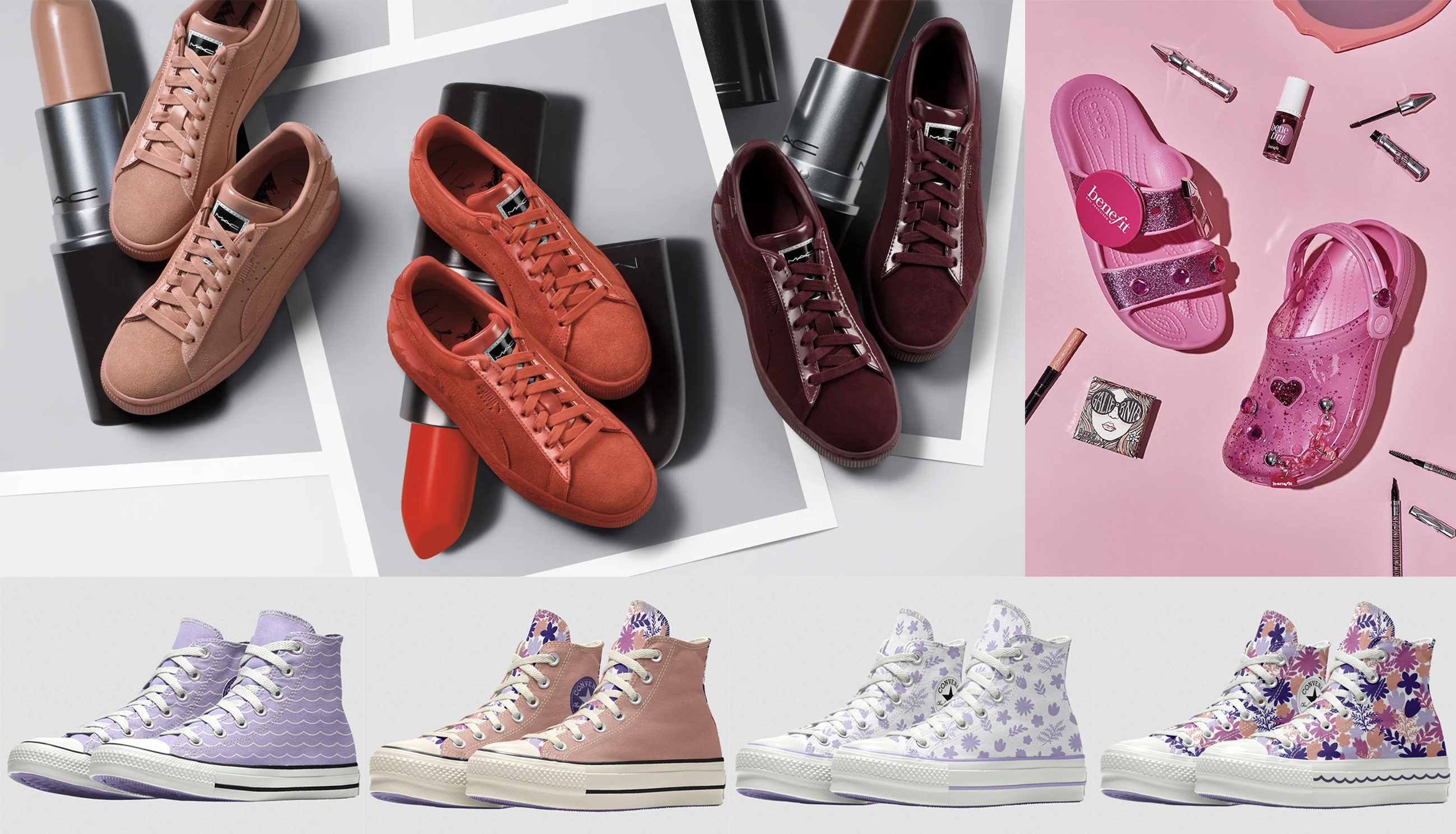 (images from teenvogue, milled and seventeen.com)
(images from teenvogue, milled and seventeen.com)
This non-makeup merch sticks out to your brain as unique, special, and innovative. It refuses to blend in with the onslaught of punchy blushes and lipsticks that all seem to boast "payoff". In contrast to makeup, merch functions as a keepsake. Makeup goes bad or gets used up; non-makeup items have a considerably longer shelf life by comparison. And while makeup brands pump out new finishes and formulas, their trendiness is just that – a trend. The collaborative merch is memorable and fresh, guaranteed to catch your eye and your bank account.
Bite Beauty’s partnership with the undergarments brand Parade is a great example of this. Underwear and lipstick seem to be a part of two vastly different worlds, and it’s unthinkable that they would ever touch, but they did, in a marketable and attractive way. Both brands live in a sustainable neighborhood with an individualistic kick. Their products embody being kind to the planet, and looking good while doing so! Bite’s makeup products are both clean and powerful, demonstrating that strict, high standards during the production process don’t have to result in monotonous colors and textures. Lipsticks and foundations with "supercharged performance" qualities take ethics and expression to the next level.
Similarly, Parade offers vibrant styles of undergarments in recycled, regenerative materials that benefit the planet. This green brand markets to bodies of all shapes, sizes, and colors in a way that isn’t performative or tacky. It’s a trustworthy brand, one that empowers you to live a colorful life in a way that’s comfortable to you. Suddenly, the collaboration between Parade and Bite becomes an obvious choice! The marketing idea behind the partnership was "Match your favorite Bite Beauty lipstick to your Parade underwear", and I'll be damned if that’s not as personally expressive as it gets. If you hold the same values that Bite does, you’re bound to love Parade just the same, and vice versa. It’s a match made in branding heaven, and one that’s destined to grab attention from clean beauty connoisseurs.
One collaboration that makes a lot more sense at first look is between Colourpop and Powerpuff Girls. When beauty and pop culture collide, which seems to be the current trend, makeup lovers are even more inclined to purchase products that feature their favorite icons. Buttercup, Blossom, and Bubbles make a sweet, almost candy-like appearance on an eyeshadow palette, blushes, and roll-on lip glosses that take you back to your childhood. The real non-makeup treat is the collection’s crime fighting hair clips, which are marketed to “complete your look” as makeup tools and accessories. Each clip is branded with a Powerpuff girl, and the name Colourpop in its signature casual font. The connection between the brands is clear – it’s a playful, nostalgic one!
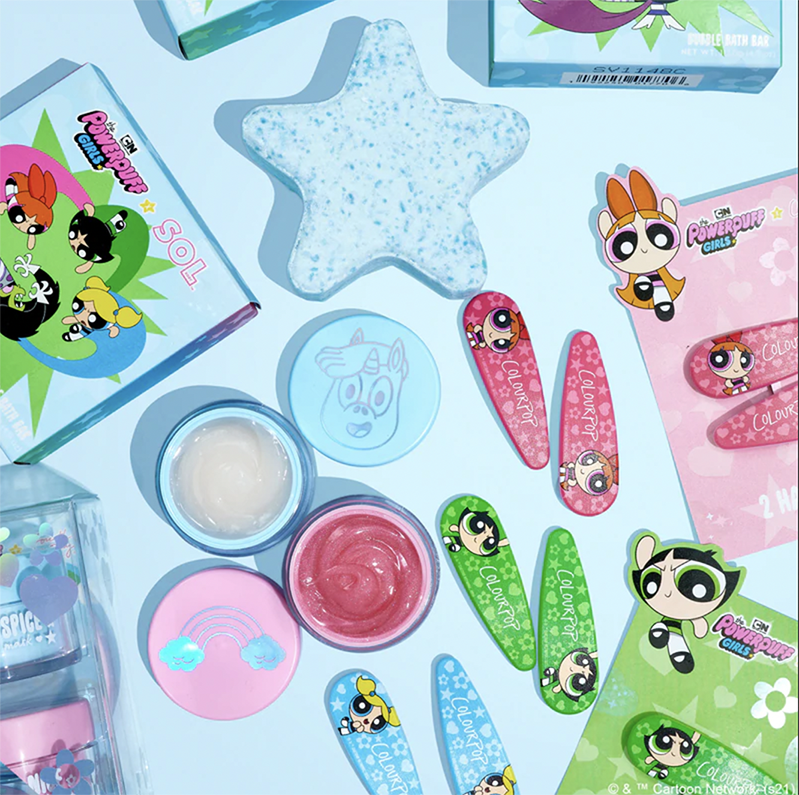 (image from colourpop.com)
(image from colourpop.com)
With both of these brands working together to make a complete collection, rather than one individual product, there’s a kind of persuasion to collect it all. Each set of two clips is $5 each, which in total, add up to a cost greater than that of the individual makeup products themselves. They’re accessories meant to strengthen your look in a cohesive sense, and Colourpop does a great job of advertising that. The reasons for this specific brand collaboration and the motivations behind it are clear. It’s meant to catch your eye, stir up childhood memories, and bring you a sense of satisfaction once you have the entire set.
Partnerships between beauty and lifestyle brands can also help to blur the lines between luxury and affordability. By working with a more affordable lifestyle brand, a luxury makeup brand can market to a wider audience with differing budgets. When Byredo, a high-end fragrance and beauty brand, collaborated with Ikea on a candle collection, they were able to create a product within their realm of beauty at a lower price. This set of 13 candles was advertised as a fragrance product that assists in curating a more cohesive, comfortable home. A simple, yet beautiful design of the candles succeeded in blending aesthetics and function, much like the values of the two brands involved.
Byredo’s home fragrances usually go from anywhere between $45-$90, but the Ikea/Byredo candles sold for only $5-$25, which seems to feel much more reasonable to your average, mid-budget beauty geek. One quality that both Byredo and Ikea fans seem to have in common is valuing the amount of use you can get out of a product. A candle will last as long as you want it to, depending on how you use it. The same could be said about furniture and decor that is meant to last through the wear and tear of daily home life. Plus, once you’ve burned through the entire candle, you have your own piece of decorative storage to make a part of your home.
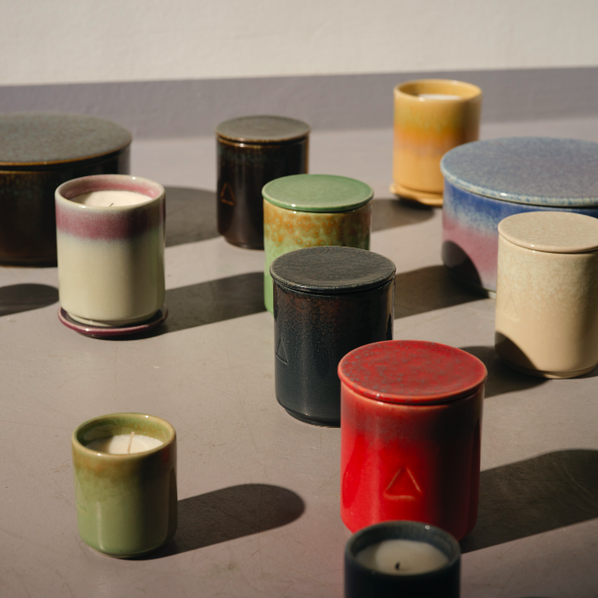
(image from goodhousekeeping.com)
When considering each beauty brand and the partners they chose, you can understand the motivations behind the union. It could be viewed simply as a desire for better profits and expanded customer reach. It could be seen as beauty companies dipping their toes into the lifestyle waters, wanting to expand and burst the bubble they’ve kept to in the past years and build hype for their brands. As noted earlier, merch is a way for customers to show their enthusiasm for a brand and for brands, in turn, to increase their visibility and strengthen customer loyalty under the guise of fostering community. According to Glossy, in 2021 several brand owners reported that the demand for merch has actually come from customers. Companies leveraged this fandom by turning customers into "ambassadors" of the brand. "People like to support brands that they believe in and that share their same values, and that’s been especially true over the past year," said Amy Liu, founder of Tower 28, a makeup brand that’s also sold sweat sets and bucket hats. Adds Charlotte Cho, founder of skincare brand Then I Met You, "Our community had been asking for [sweatshirts] since we launched. They love our signature periwinkle color, and they wanted us to make everything from candles to cozy sweaters. It took us years to find the right color and quality of our periwinkle pullovers, and when we launched, we were met with so much excitement and enthusiasm from our community…When a community resonates with your brand, they want to incorporate it into their lifestyle and be an ambassador of the brand."
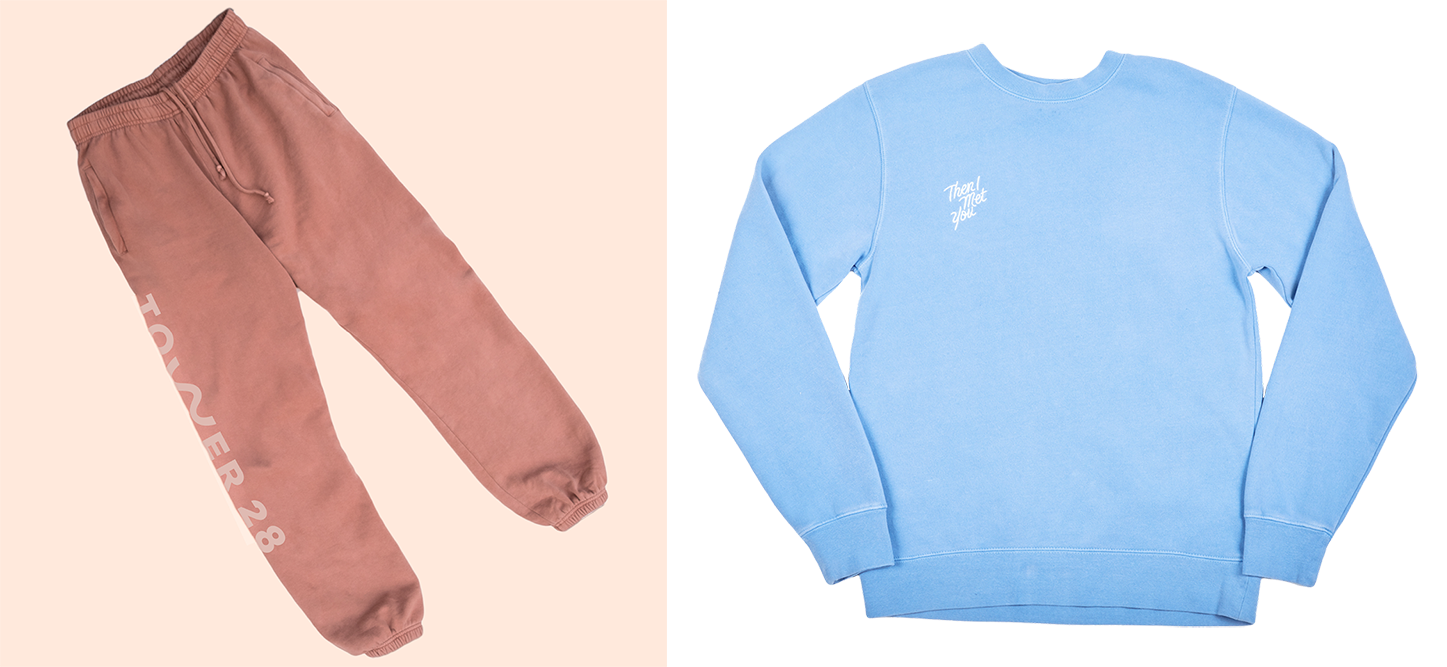 (images from milled and thenimetyou.com)
(images from milled and thenimetyou.com)
No matter where this trend came from, it’s going in the direction of redefining what we deem beautiful. The beauty industry is sneaking its way into lifestyle categories, making you forget why you came to that specific makeup brand in the first place. You showed up for the transformative products, the vibes of a brand that match your own, and the "bigger message" that the brand displays through their goals and values. But now, you’re here for the underwear, the hair accessories, the candles, the shoes, the stickers, and whatever else is on the horizon, no matter how far from beauty it seems.
*Of course, non-makeup merch isn’t a new idea. A few examples: Avon has been selling everything from mugs and figurines to figurines at least since the 1960s, and Elizabeth Arden started selling ceramic trinkets by themselves (i.e. not as gifts-with-purchase) in the late 1970s. Around the same time, Helena Rubinstein, in collaboration with Unives, created an eyewear line to coordinate with the company’s latest eye shadow colors. And both Harriet Hubbard Ayer and Revlon partnered with the Ideal Toy Company to produce children’s dolls for their respective brands in the 1950s.


